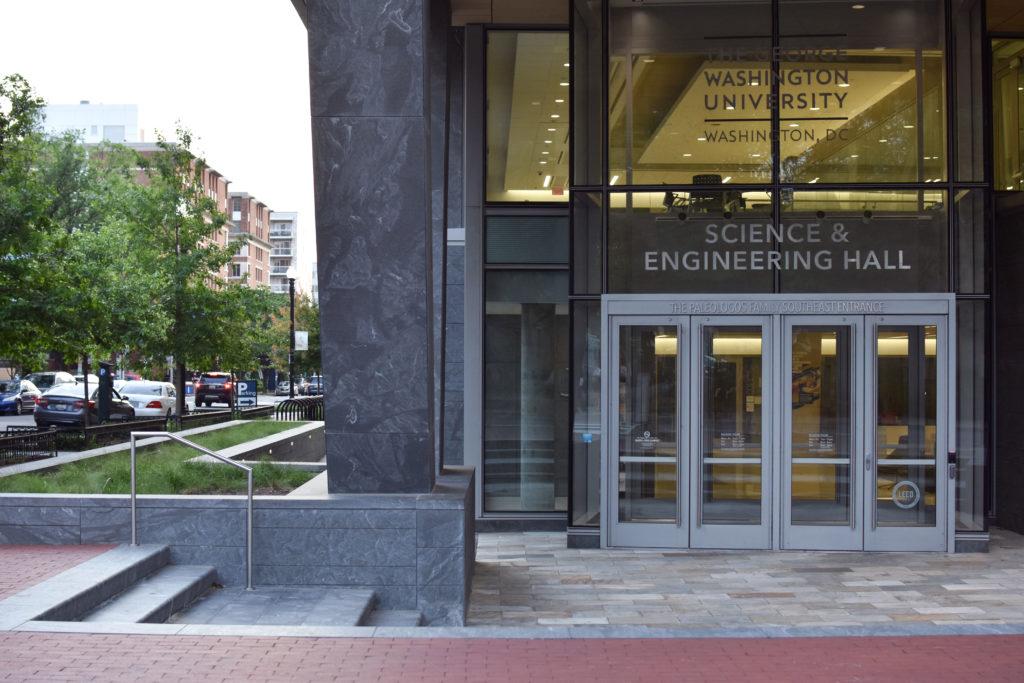One year after receiving a telescope that can measure levels of greenhouse gases in the atmosphere, researchers have conducted a broad range of climate-related research.
Researchers in the chemistry department use the telescope – which is the only one of its kind in existence – to research concentrations of greenhouse gases at different elevations and track variations in greenhouse gases in different ecosystems. Faculty said the telescope helps collect data on greenhouse gas concentrations, enabling researchers to discover the consequences of rising greenhouse gas levels.
In May 2018, NASA’s Goddard Space Flight Center loaned the device to Houston Miller, a professor of chemistry, after Miller completed a NASA study last year measuring melted permafrost layers – soil that is always frozen – in Alaska.
“GW has arrived where people have been doing good science and good technology for a really long time, and it’s really nice that people are paying attention to what this side of the University has to offer,” he said.
The device produces detailed images of carbon dioxide and methane concentrations, which allow researchers to track the concentration of greenhouse gases like carbon dioxide at different elevations in the atmosphere, he said. Miller and his graduate research assistant, Monica Flores, have only tested the device on the sidewalk outside the Science and Engineering Hall, but Miller said he hopes to use the telescope to measure greenhouse gas concentrations from multiple locations.
Miller said he will submit a proposal to the U.S. Department of Energy on May 23 to add a new component to the device that can sense concentrations of water vapor in the air. He said water vapor traps heat into the atmosphere, and tracking water concentration will give researchers additional data to develop climate models.
Miller will also submit a proposal to NASA to develop a telescope with sensors for carbon dioxide, methane and oxygen, he said.
He said he wants to set up three telescopes in multiple ecosystems – the rainforest in Puerto Rico, the desert in New Mexico and the coastline of Maryland – to see how greenhouse gas concentrations differ among biomes. Determining the atmospheric concentration of greenhouse gases will provide climate researchers and atmospheric chemists with data to predict climate patterns, he said.
“We’re not done with this technology,” he said. “There is going to be a lot going on in the next couple of years.”
Miller said the telescope uses optical fibers to collect sunlight. He said laser sensors inside the telescope filter carbon dioxide and methane molecules from sunlight, and changing which laser sensor is inserted inside the telescope adjusts which atmospheric molecule the device detects.
Miller added that the device can be used to ensure countries participating in international climate agreements – like the Paris Climate Accords, an international agreement to decrease greenhouse gas emissions worldwide – are meeting their goals to lower carbon emissions.
“There is no doubt which way the carbon is going, but hopefully we’ll be able to add more data to keep people honest,” he said.
Atmospheric chemistry experts said the device facilitates researchers’ efforts to discover the concentration of greenhouse gases in the atmosphere, which will help atmospheric chemists determine how greenhouse gas levels can affect global climate change.
Annmarie Carlton, an associate professor of atmospheric chemistry at the University of California, Irvine, said researchers need to calculate the concentration of carbon dioxide in the atmosphere to understand the gas’ effects on global climate.
“Life on Earth has always perturbed atmospheric composition, but it has never happened so quickly, and the atmospheric composition is changing faster than we can measure and understand it, so we are having this determining impact on the common error that faces the globe,” Carlton said.
Ronald Cohen, a professor of chemistry and Earth and planetary sciences at the University of California, Berkeley, said the technology will allow researchers to conduct several projects about greenhouse gas concentration in the atmosphere, like determining how much traffic-related pollution contributes to overall greenhouse gas levels. Cohen said the telescope will advance researchers’ knowledge of how different greenhouse gases affect climate and carbon cycles.
“There are lots of interesting science questions about how the carbon cycle works on our planet, and new measurements that allow us to answer those questions are exciting and important when the measurements are coupled with really good questions,” he said.
Ed Prestera contributed reporting.





